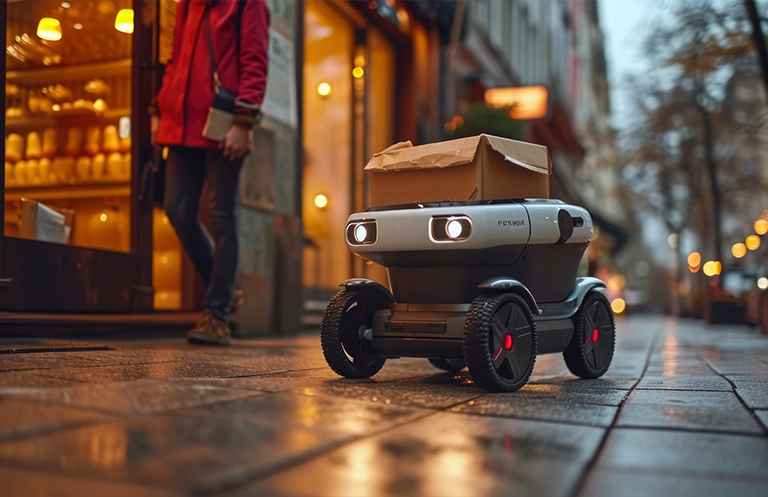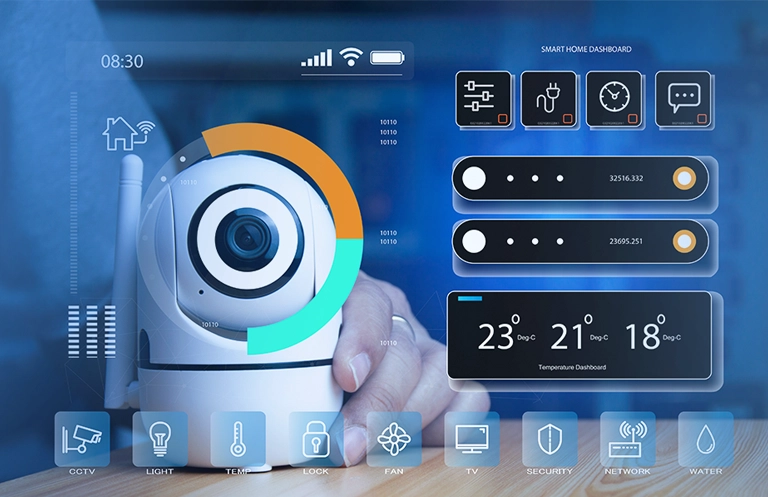In a rapidly advancing world marked by relentless technological innovation, the future of robotics is being sculpted. Gone are the days when robots were static entities confined to controlled environments. The dynamic demands of modern-day applications have highlighted the limitations of traditional centralized approaches. Instead, the future seems to be gravitating towards “Edge Robotics”, an evolution that stands to redefine the very core of automation. But what is this shift, and why does it matter to the tech savvy CxO of today?
The Evolution of Robotics: From Static to Dynamic
Historically, robots were designed for static, rule-based tasks within highly controlled environments. However, as the world around them changed, the challenges they faced grew more complex, underscoring the need for greater adaptability and autonomy.
Edge Robotics: The Confluence of Proximity and Intelligence
Edge Robotics doesn’t merely represent a trend or a buzzword; it’s a fundamental reimagining of robotic philosophy. At its heart, it emphasizes the importance of processing data and making decisions closer to the data source or point of action. This eliminates the reliance on distant cloud-based systems and introduces a localized autonomy that’s faster, more secure, and more responsive.
Key Components Shaping Edge Robotics
- Onboard Processing: Modern edge robots boast high-performance computing abilities that allow them to interpret data and decide actions without external inputs.
- Enhanced Sensors and Perception: Advanced sensor arrays offer robots a real-time awareness of their surroundings, enabling precise interactions and navigations.
- Machine Learning and AI Integration: Through AI and machine learning, edge robots can adapt to their environments, learning from experiences and consistently improving their performance.
- Strategic Connectivity: Although the essence of Edge Robotics lies in localized processing, connectivity to central systems remains vital for periodic updates, system monitoring, and wider coordination.
The Edge Advantage: Why It’s a Game-Changer
- Immediate Responses: Whether it’s an autonomous car making split-second decisions or a surgical robot performing intricate procedures, latency is a luxury they can’t afford. Edge Robotics drastically reduces communication delays, ensuring actions are timely and precise.
- Enhanced Data Security: Processing sensitive information locally minimizes potential breach points, a particularly crucial aspect in sectors like healthcare, finance, and defense.
- Scalability and Efficiency: Edge devices, with their decentralized nature, can collaboratively handle tasks, facilitating system scalability without significant cloud costs.
- Performance in Unpredictable Settings: Be it in the unpredictable terrains of agriculture or during disaster response missions, Edge Robotics stands out, especially when network reliability is questionable.
Practical Applications: Beyond Theory
From manufacturing floors to the fast lanes of autonomous transportation, Edge Robotics is bridging the gap between theoretical concepts and tangible change:
- Manufacturing: Robots with edge capabilities now analyze production processes in real-time, optimizing quality control, predictive maintenance, and resource allocation. Companies at the forefront of innovation, like eInfochips, are instrumental in driving these transformative shifts, underscoring the blend of domain knowledge and technical expertise they bring.
- Healthcare: The precision of edge-enabled surgical robots and their role in patient care is revolutionizing medical procedures and patient interactions.
- Transportation: The dream of self-driving cars relies on edge processing, enabling vehicles to swiftly navigate traffic situations. It’s worth noting that industry pioneers, including eInfochips, have been pivotal in advancing the technologies that underpin these autonomous systems.
- Agriculture: Precision agriculture is now a reality. Drones and tractors with edge features optimize crop yields, pest control, and resource management.
- Logistics: E-commerce has made logistics more complex than ever. Automated sorting, packaging, and handling are enhanced by Edge Robotics, improving efficiency and accuracy.
Overcoming the Challenges Ahead
Edge Robotics is promising, but not without challenges:
- Balancing Processing Power and Costs: Achieving high computational capabilities on edge devices without skyrocketing costs is a fine balance to strike.
- The Need for Industry Standards: Inter-device communication is crucial. A lack of standardized protocols might hinder adoption rates.
- Prioritizing Device Security: Protecting edge devices from cyber threats is paramount. Robust security solutions must be in place.
- Efficient Energy Use: With many edge devices relying on batteries, optimizing energy use becomes vital.
Embracing the Edge Era
The transformative potential of Edge Robotics is vast, promising a future where robots are more self-reliant and adept. For businesses and industries, this is more than an evolutionary step; it’s a revolution. The onus now lies on organizations to adapt and harness the unmatched potential that Edge Robotics offers, ensuring they remain at the forefront of this technological renaissance.
In conclusion, Edge Robotics symbolizes more than just the future of robotics—it’s a testament to how technology can drive change, redefine paradigms, and open doors to uncharted possibilities. This technological dawn beckons businesses, engineers, and thought leaders to join the journey, as the world moves towards a smarter, interconnected future.














